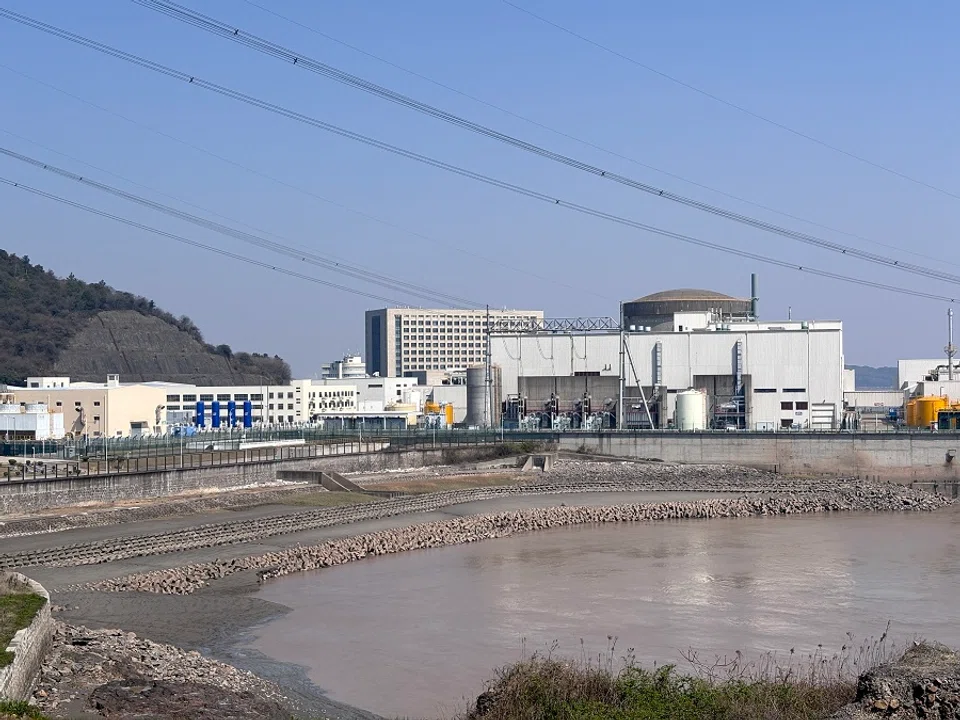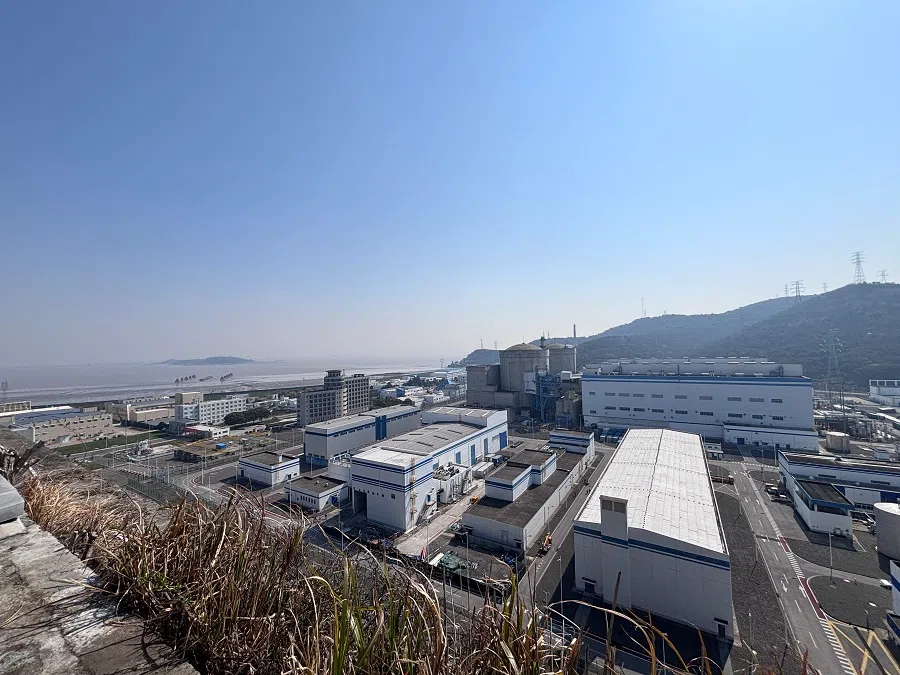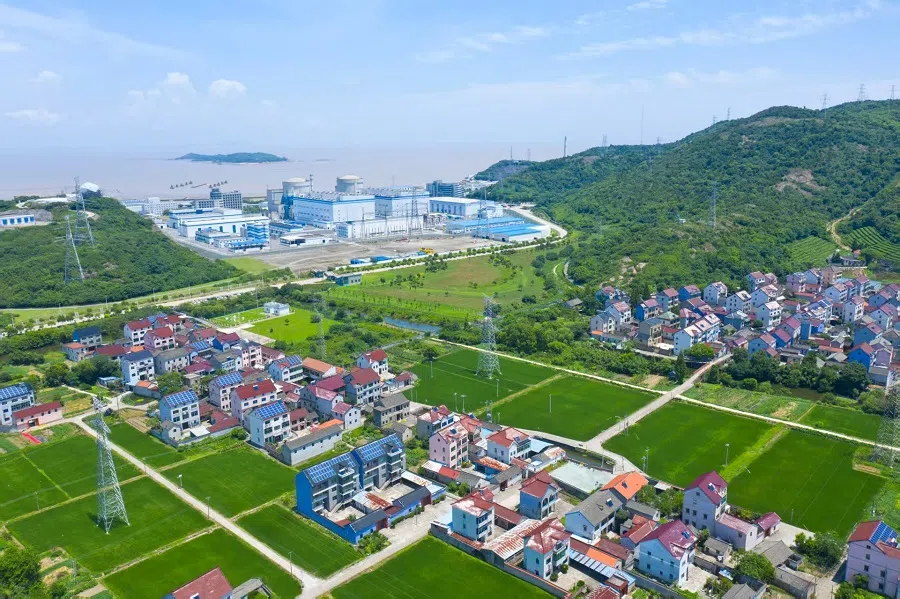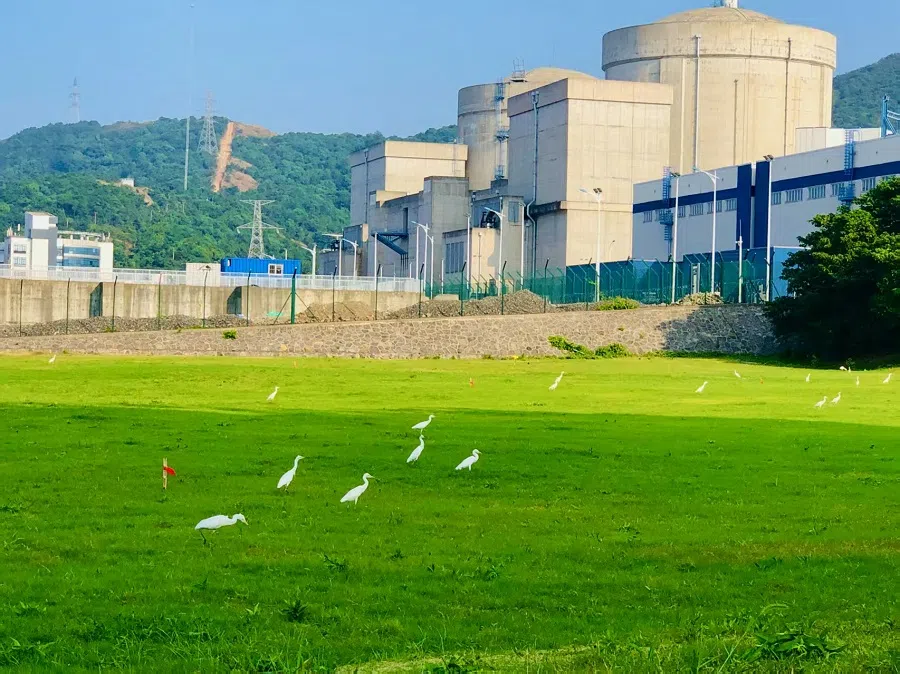Why China is doubling down on nuclear energy
Fuelled by environmental and economic incentives, China is stepping boldly into a new nuclear era by ramping up nuclear energy development. Lianhe Zaobao Shanghai correspondent Li Kang tells us more about how China plans to harness the benefits of nuclear power.

(Photos: Li Kang/SPH Media, unless otherwise stated)
Along the shores of Hangzhou Bay, a massive white cylindrical structure stands by the sea. This is the site of China’s first nuclear power plant — the Qinshan Nuclear Power Plant, which began construction in 1985.
In late March, I represented Lianhe Zaobao and visited the Qinshan Nuclear Power base — located in Haiyan County, Jiaxing City, Zhejiang Province — as part of an official tour, along with dozens of domestic and foreign journalists. This was the first time the base had opened its doors to foreign journalists.
China now operates 59 nuclear power units spread across the eastern coastal provinces, from Hongyanhe in Liaoning in the north to Changjiang in Hainan in the south.
A decisive shift towards nuclear energy
From just a single reactor 40 years ago, Qinshan has expanded into a huge complex with nine reactors, making it China’s largest nuclear power base in terms of the number and variety of reactor types.
Qinshan’s transformation is a microcosm of China’s nuclear power development over the past 40 years. Beginning with Qinshan, China now operates 59 nuclear power units spread across the eastern coastal provinces, from Hongyanhe in Liaoning in the north to Changjiang in Hainan in the south.
At the same time, China leads the world with 29 nuclear power units under construction. Bloomberg New Energy Finance has predicted that China could surpass France and the US by 2030 to become the world’s leading nuclear power nation.

In recent years, Chinese officials have noticeably stepped up China’s nuclear power development. Following a proposal at the 20th National Congress of the Chinese Communist Party in 2022 to “actively promote the development of nuclear power in an orderly manner and on the premise of safety”, the number of approved units for construction has exceeded ten each year over the past three years.
Last year, the Chinese government issued a document outlining the green transition, which clearly stated the need to accelerate the construction of coastal nuclear power and other clean energy bases. This was also the first time since the 2011 Fukushima nuclear disaster in Japan that the Chinese government used the word “accelerate” in an official document regarding nuclear power project development.
...thermal power accounted for 66.3% of China’s total power generation in 2023, while hydropower, wind power and solar power accounted for nearly 30% with nuclear power accounting for just 4.6%.
Benefits of nuclear power
There are numerous considerations behind China’s accelerated nuclear power development, including energy structure transformation, economic benefits and technological advantages, among others.
Regarding China’s current energy structure, the proportion occupied by fossil energy remains high. According to the China Power Industry Development Report 2024, thermal power accounted for 66.3% of China’s total power generation in 2023, while hydropower, wind power and solar power accounted for nearly 30% with nuclear power accounting for just 4.6%.
Due to the weather-dependent nature of hydropower and wind power, the potential for expansion is limited. Thus, in order to achieve the “3060” goal of reaching peak carbon emissions by 2030 and carbon neutrality by 2060, China must focus on nuclear power.

Nuclear power projects can also spur local economic growth. Shang Xianhe, Qinshan Nuclear Power Plant’s general manager, stated during an interview that nuclear power represents the “perfect integration” of a country’s economic and technological development. The investment required for a nuclear power unit, nearly 20 billion RMB (approximately US$2.74 billion), can provide a substantial boost to local economic development.
Official data shows that Haiyan County, where Qinshan Nuclear Power Base is located, has a permanent population of less than 500,000 people. However, in 2024, its per capita GDP was nearly 190,000 RMB, almost double the national average. Haiyan County has consistently been recognised as one of the “top 100 counties in China” for several years. Last year, the county achieved a GDP of 72.5 billion RMB, with the nuclear power industry contributing over 10 billion RMB to this figure.
Internationally, China’s Generation IV projects need to obtain certification from the International Atomic Energy Agency (IAEA) to ease global concerns.
China’s fourth-generation nuclear technology: advancements and obstacles
After 40 years of development, China’s nuclear power industry also possesses certain competitive advantages, especially with fourth-generation nuclear technology, which is now commercially operational.
Compared to Generation III nuclear technology, Generation IV offers environmental advantages, such as improved efficiency and waste management. While it still produces radioactive waste, it aims to reduce the volume and improve the handling of waste. Additionally, Generation IV reactors feature advanced safety systems designed to minimise the risk of contamination. Unlike Generation III, which typically powers large gigawatt-scale reactors, Generation IV technology can develop smaller, modular reactors (around 300 megawatts), offering greater flexibility for industrial applications.
Currently, the Qinshan Nuclear Power Plant mainly employs uprated Generation II reactors. China’s fourth-generation technology is employed at the high-temperature gas-cooled reactor nuclear power plant in Shidao Bay, Shandong, and the Jiangsu Xuwei nuclear power project, which was approved last year.

Cheng Yi-Heng, a consultant at SP Chemicals and adjunct professor at Tongji University’s Institute of Environment for Sustainable Development, told Lianhe Zaobao that China could well be the most experienced in operating Generation III reactors globally due to continuous development in the field. On the other hand, countries such as the US, Germany and Japan have experienced periods of stagnation in their nuclear power programmes due to nuclear accidents.
As for Generation IV reactor technologies, Cheng noted that the fourth-generation Shidao Bay Nuclear Power Plant in Shandong had already gone into commercial operation in 2023. On the other hand, the US, Japan and France are still conducting research on fourth-generation nuclear power, which means that commercialisation will take another five to ten years.
However, as pointed out, China faces several challenges in developing fourth-generation nuclear technology. Internationally, China’s Generation IV projects need to obtain certification from the International Atomic Energy Agency (IAEA) to ease global concerns. Domestically, while third-generation reactors are currently prioritised, advancing fourth-generation technology will require building national consensus and accelerating public education efforts about these next-generation systems.
Nuclear power goes global
Besides nuclear technology advancements, China has also been accelerating its efforts to export nuclear power over the past decade. As early as 2013, China’s National Energy Administration had already issued a document outlining a “going global” strategy for nuclear power. As of 2020, 45 countries and regions — most of which are concentrated along the Belt and Road Initiative — are using China’s nuclear power facilities.
Lin Boqiang, dean of the China Institute for Studies in Energy Policy at Xiamen University, pointed out in an interview that while technology and cost are not major obstacles for China’s nuclear power exports — as exemplified by the Hualong One nuclear reactor — the greater challenge lies in geopolitics.
He said, “The bigger issues of going global still lie in geopolitical considerations, financial arrangements with local governments, and trust in Chinese nuclear power. All these take time.”
Beituan village party secretary Zhang Zhenhua plucked a strawberry inside a greenhouse and popped it into his mouth, saying, “Everything here is naturally and organically grown, so please feel free to try it.”

This foreign press tour included a special stop to the Qin nuclear-powered agricultural farm (秦核农场). Located in Beituan village, Haiyan county — which is situated less than five kilometres from the Qinshan Nuclear Power Base — this vegetable farm is jointly established by the nuclear power base and local villagers.
When the bus arrived at the farm, five farmers were working in the vegetable garden, and several egrets flew over the fields. Beituan village party secretary Zhang Zhenhua plucked a strawberry inside a greenhouse and popped it into his mouth, saying, “Everything here is naturally and organically grown, so please feel free to try it.”
Safety remains a top priority
The 2011 Fukushima nuclear accident put nuclear safety under the spotlight. For residents living near nuclear power plants, concerns about potential radiation exposure and the safety of soil and water sources are directly relevant to their daily lives.
Apart from visiting the nuclear-powered farm to showcase the harmonious coexistence between local residents and the nuclear power plant, officials have also repeatedly stressed China’s recent efforts in nuclear safety during the tour and presentations.

For example, after the Fukushima nuclear accident, the Qinshan Nuclear Power Base implemented improvements based on 15 measures from the National Nuclear Safety Authority in its response to natural disasters, which includes raising coastal embankments and installing additional diesel generators on the hilltops to ensure a backup power supply for the reactors.
Luo Luhong, deputy director of the China National Nuclear Corporation’s Party and Mass Work Department, said, “Nuclear energy is inherently an open field. We share a common philosophy called ‘feedback from experience’. If someone stumbles somewhere and shares that experience with us, we will be able to address that vulnerability when we get there.”
This article was first published in Lianhe Zaobao as “能源转型和经济效益多重考量下 中国显著加快核电布局”.




![[Big read] China’s 10 trillion RMB debt clean-up falls short](https://cassette.sphdigital.com.sg/image/thinkchina/d08cfc72b13782693c25f2fcbf886fa7673723efca260881e7086211b082e66c)
![[Big read] Love is hard to find for millions of rural Chinese men](https://cassette.sphdigital.com.sg/image/thinkchina/16fb62fbcf055b710e38d7679f82264ad682ce8b45542008afeb14d369a94399)